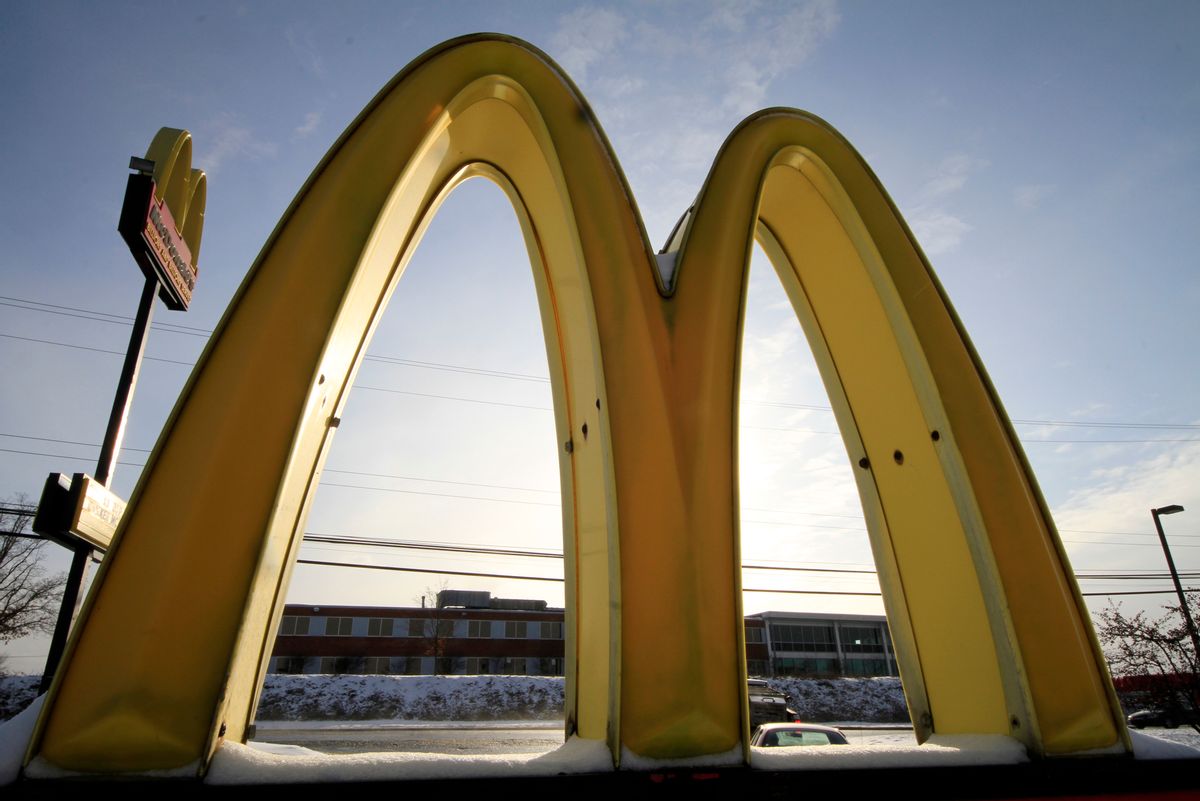Fast food chains like McDonald's and Burger King are known for appealing to young children by giving away toys, touting cartoon mascots and fun child-sized meals--if you can earn brand loyalty from a toddler, he or she will likely go through life with a nostalgic affection for McNuggets or something. A new study found that not only are these chains marketing to children, they are marketing to poor, black children, who are already at an increased likelihood of being obese and otherwise unhealthy.
Researchers from the University of Illinois at Chicago and Arizona State University analyzed data from more than 6,700 chain restaurants around the U.S. and found that chains that advertised in black neighborhoods were more than 60 percent more likely to target children than those in white neighborhoods. The same was true for lower- and middle-income areas as opposed to high-income areas, and rural as opposed to urban areas. The gist? Chains are targeting kids when their surrounding communities are more disadvantaged.
"Fast food restaurants in black neighborhoods have significantly higher odds of using kids' meal toy displays to market their products to children compared to restaurants in white neighborhoods," said lead author Punam Ohri-Vachaspati in an interview with the Washington Post. "The associations we observe are troubling because we know that black children are at higher risk for consuming unhealthy diets including fast food, and have higher prevalence of obesity."
The Post's Roberto A. Ferdman dissected the study:
More than 20 percent of all the restaurants [analyzed], and 31 percent of the chain restaurants used child-directed marketing -- a category that includes advertisements with cartoon characters, television personalities, movie stars, and sports figures, as well as displays with kids' meal toys, three-dimensional cardboard cut-outs, and play areas...
Already, fast foods account for too many calories and feed too many children in this country. Nearly a third of American kids between the ages of 2 and 11 — and nearly half of those aged 12 to 19 — eat or drink something from a fast food restaurant each day, according to a study from 2008. And fast food accounts for roughly 13 percent of total calories eaten by children and teenagers aged 2 to 18 in the United States.
The tendency of fast food companies to settle largely in poor communities is an oft-observed trend. Andrea Freeman, a lawyer, writes of the phenomenon as such: "The overabundance of fast food and lack of access to healthier foods, in turn, have increased African American and Latino communities' vulnerability to food-related death and disease. Structural perpetuation of his race- and class-based health crisis constitutes "food oppression."
Dr. Jennifer Harris, the Director of Marketing Initiatives at Yale University's Rudd Center for Food Policy and Obesity argues that a major way to combat this trend is through advertisements: "The companies will argue that they can't control it if some people eat more fast food than others, but at the same time, they're increasing the disproportionate demand through their marketing. For that reason, regulating marketing in fast food companies is the only way to solve this problem."

Shares